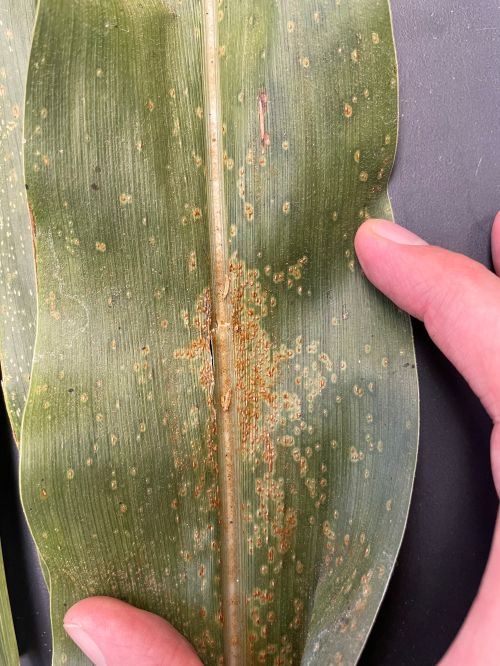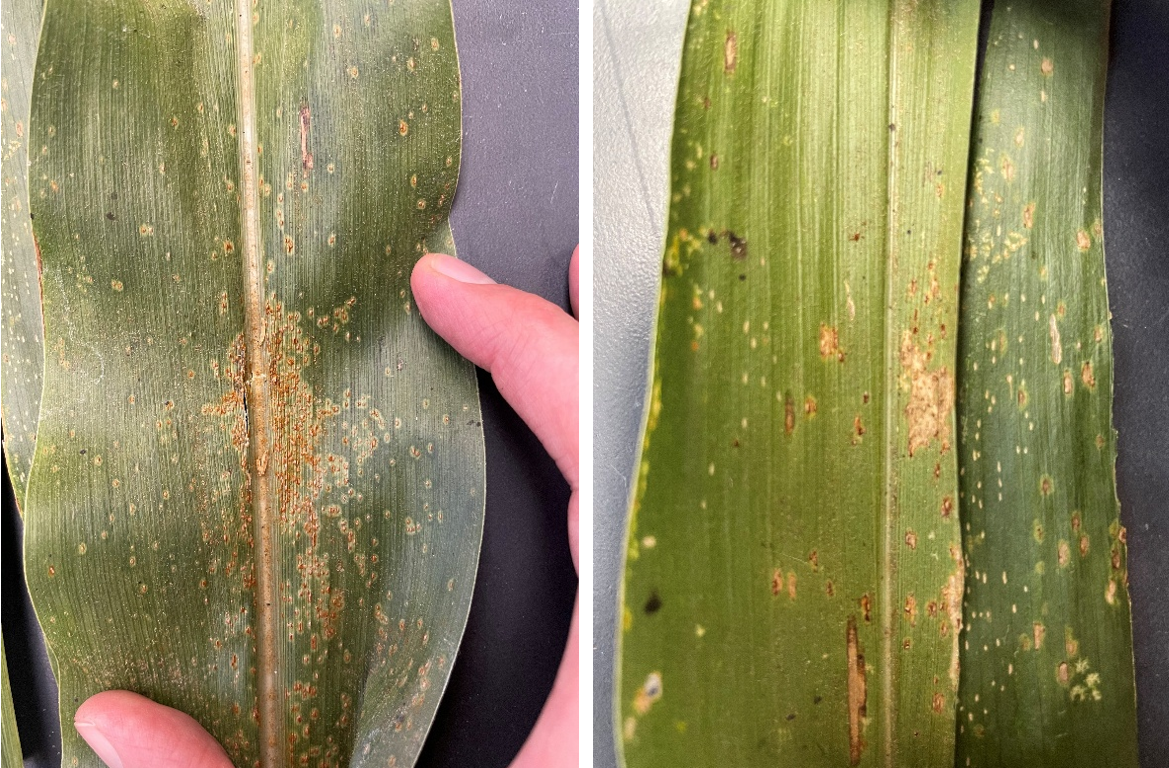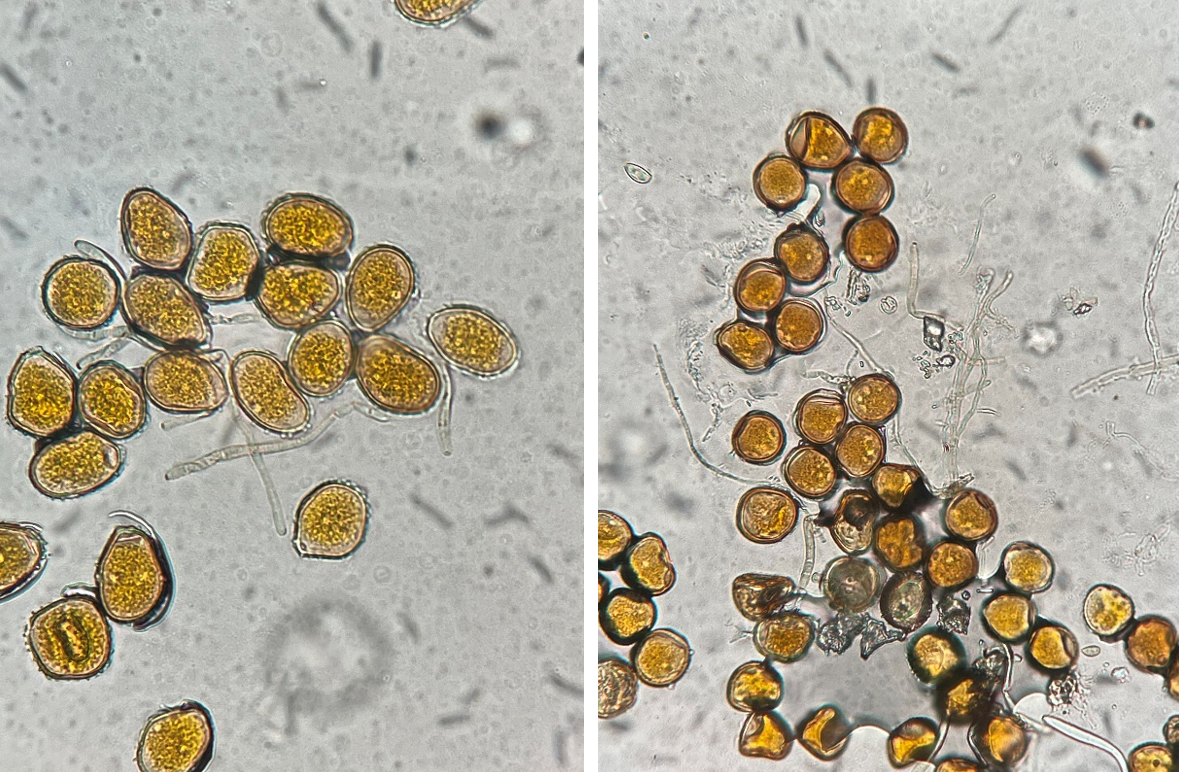Southern rust an occasional threat to Michigan corn
Southern rust, common in southern states, thrives in warm, humid weather and spreads via spores from the south. Hybrid susceptibility matters, but Michigan hybrids are not frequently screened for resistance. Learn more about identification and management.

Take-aways
- It can be difficult to distinguish between southern rust and common rust. Consider submitting a sample to Michigan State University Plant and Pest Diagnostics or directly with Marty Chilvers’ lab.
- Scout fields regularly, especially as we move into reproductive stages. The southern rust map is a helpful resource in alerting us as to where to scout, but should not be relied upon for timing fungicides.
- Similar to other foliar diseases, a fungicide application when warranted is typically best timed from tassel (VT/R1) to milk (R3). Fungicide efficacy varies and an efficacy guide is available.
- Leave a check strip if you are making a fungicide application so you can understand your return on investment.
Why southern rust this season?
Southern rust is favored by warm (80 degrees Fahrenheit) and humid conditions, and we seem to have had plenty of that this season. The other factor is the deposition of spores. The southern rust fungus Puccinia polysora produces many pigmented spores that are suited to long-range dispersal. Puccinia polysora needs a living host to reproduce and does not survive in residue. So, each year southern rust begins in the south and moves northward. The speed of movement depends on temperature and humidity as well as the transportation of spores via wind and weather events. Each year we track the movement of southern rust, which is shown in the map below.

Is it southern rust or common rust?
It can be hard to distinguish between southern rust and common rust. For confirmation, send a sample into Michigan State University Plant and Pest Diagnostics or drop a sample off with my lab. You can send good quality pictures via email at chilvers@msu.edu or via X (twitter) @MartinChilvers1, however there may be uncertainty in the diagnosis.


When should I apply a fungicide, and should I make two applications?
Similar to other foliar diseases, a fungicide application when warranted is typically best from tassel (VT/R1) to milk (R3). Later applications at the R4 growth stage or beyond are less likely to be profitable.
Table 1. Decision chart for fungicide timing, modified from the Crop Protection Network.
|
Crop stage when southern rust is first detected |
Possible benefit from spraying |
Comment |
|---|---|---|
|
Vegetative |
Not likely to find southern rust |
Scout fields and monitor disease progress; may need a second spray |
|
VT/R1 (Tasseling/Silking) |
Yes |
May need a second spray |
|
R2 (blister) |
Yes |
Less likely to need a second spray |
|
R3 (milk) |
Yes |
Not likely to need second spray |
|
R4 (dough) |
Maybe, with severe disease pressure |
No second spray needed |
|
R5 (dent) |
Less likely |
No second spray needed |
|
R6 (black layer) |
No |
No |
If I apply a fungicide, what should I use?
There are some pretty big differences in fungicide performance. Check the fungicide efficacy guide that is reviewed and updated annually. Each year we conduct fungicide efficacy trials to assess current and new products and combinations. Those trials are summarized in fungicide efficacy charts that are updated annually.
What is my return on investment? Leave a check strip!
If you decide to make a fungicide application, be sure to leave check strips and pencil out the costs and benefits, otherwise you will never know what your return on investment (ROI) was. It’s always important to pay attention to what is working for you and what is not. At the Crop Protection Network, we’ve assembled multistate fungicide trial data into a fungicide ROI calculator. The calculator is new, and we are working to improve this tool. The ROI tool will help examine the potential economic benefits by examining input costs, market price and production outcomes. These ROI calculators are intended to support the decision-making process. It’s important to note that these are not predictive, but they provide a framework for exploring trial data.
If you have questions about corn disease management, don’t hesitate to contact me at chilvers@msu.edu.
This work was supported in part by the Corn Marketing Program of Michigan, National Predictive Modeling Tool Initiative, Project GREEEN and MSU AgBioResearch
Additional resources
- An Overview of Southern Rust
- Fungicide Efficacy Guide
- Southern rust continues to develop across Iowa



 Print
Print Email
Email